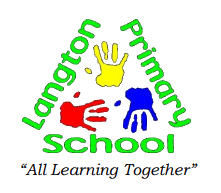At Langton Primary School our topic planning is created through Cornerstones Education.
Autumn Term
AUTUMN 1 – A Child’s War (History)
A siren sounds, a building crumbles, a Spitfire zooms overhead. Take cover. It’s 1939 and Britain is at war. Deep down in the Anderson shelter, learn why nations are fighting and why child evacuees must make the long journey from their homes and families into unknown territory. Read the diary of Anne Frank, written whilst hiding from the terrifying stormtroopers in a secret annexe, and try to empathise with her hopes and fears. Make do and mend. Cook up a family meal from meagre rations. Delve deep into a bygone era, when loose lips sunk ships. And, as peace is declared, let’s get ready to celebrate. Mr Churchill says ‘It’s an unconditional surrender.
AUTUMN 2 – Fallen Fields (History)
Known as ‘the war to end all wars’ the First World War was a conflict that had a devastating effect on millions of people across the world.
What started this global tragedy? What was life like for families on the home front as they waited for news of loved ones who were ‘missing in action’? How did the soldiers endure the terrible conditions in the trenches? How was a fragile peace finally achieved?
We will always remember the fallen.
Spring Term
SPRING 1 – Star Gazers (Science)
Journey through space, the final frontier. Navigate beyond the Sun, the magnificent, blazing star at the centre of our Solar System. Investigate the eight planets: Mercury, Venus, Earth, Mars, Jupiter, Saturn, Uranus and Neptune. Take a look at the Moon, a celestial body that orbits Earth. Programme a rover to traverse a lunar landscape and work scientifically to investigate gravity, and what happens when there is none. Compare the times of day at different places on the Earth and use GPS satellite navigation systems to track hidden treasure. Get in a spin making simple models of the Solar System and listen to the haunting sounds of space themed songs. Then it’s 3, 2, 1, blast off. Build and launch a rocket for an important test mission. Exploring space is probably the greatest adventure that humankind has ever undertaken. Are we alone? Or are there other life forms out there?
SPRING 2 – Investigating Our World (Geography)
This essential skills and knowledge project teaches children about locating map features using a range of methods. They learn about the Prime Meridian, Greenwich Mean Time (GMT), and worldwide time zones and study interconnected climate zones, vegetation belts and biomes. Children learn about human geography and capital cities worldwide before looking at the UK motorway network and settlements. They carry out an enquiry to identify local settlement types.
Summer Term
SUMMER 1 – Off With Her Head (History)
What sort of man would order the beheading of his wife? Was she really that bad? Travel back in time to the 1500s and meet the terrifying Tudors, a domineering dynasty that changed our history. Discover an opulent court where dancing and singing goes hand in hand with swift falls from favour, and even swifter falling of heads. Develop your painting skills in miniature, solve riddles and remember to protect your precious neck with a large white ruff, if you want to survive at Tudor court. Flex your detective muscles and become a criminal investigator. Will you find out the facts or will the evidence from the past bemuse you? How will you find the accused, innocent or guilty? It’s your turn to take part in one of the most famous trials that the world has ever known.
SUMMER 2 – Local Study (Geography)
Use maps, atlases, globes and digital/computer mapping to locate countries and describe features studied
Use the eight points of a compass, four and six-figure grid references, symbols and key (including the use of Ordnance Survey maps) to build their knowledge of the United Kingdom and the wider world
Use fieldwork to observe, measure, record and present the human and physical features in the local area using a range of methods, including sketch maps, plans and graphs, and digital technologies.
